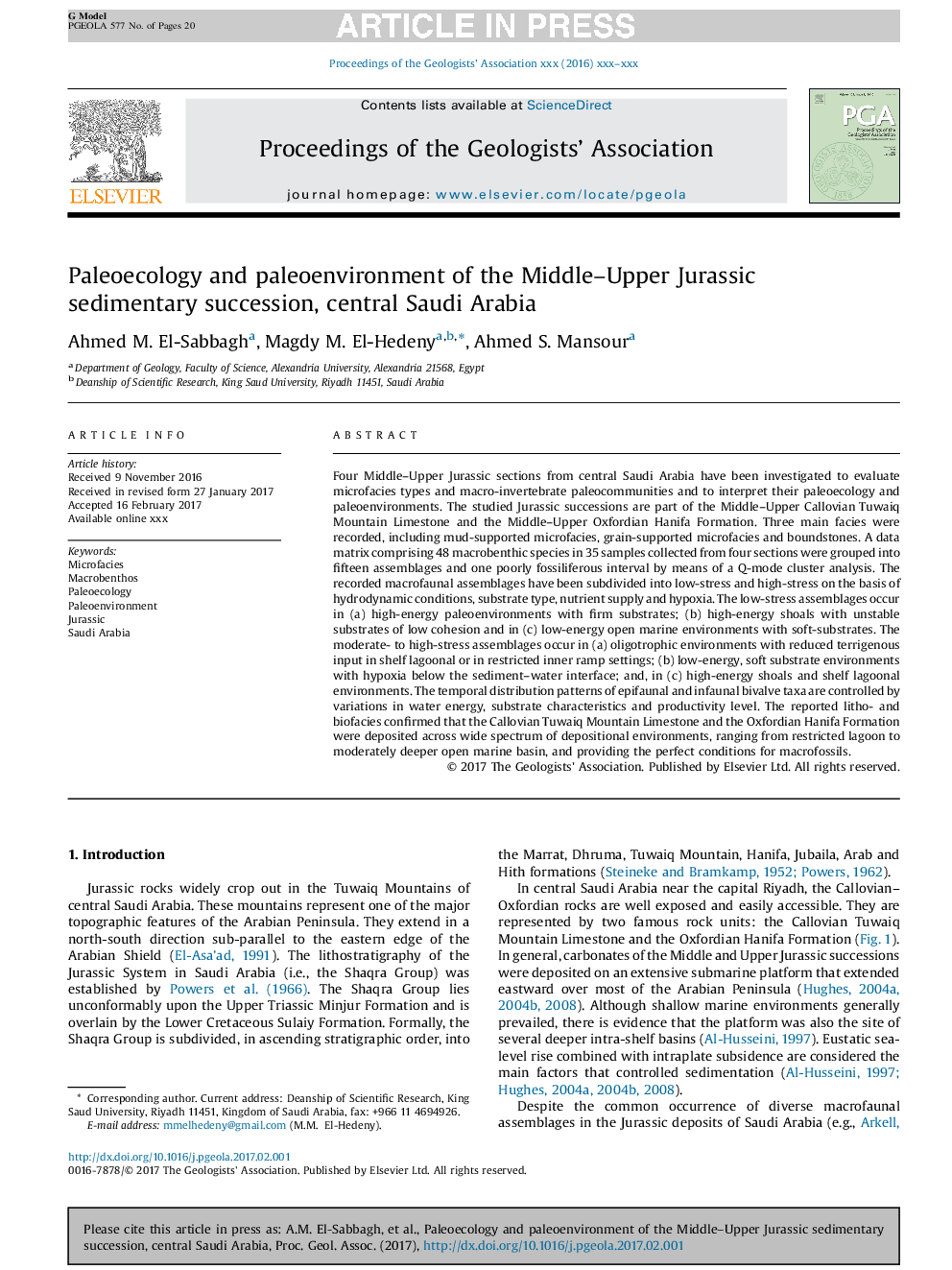| Article ID | Journal | Published Year | Pages | File Type |
|---|---|---|---|---|
| 5786433 | Proceedings of the Geologists' Association | 2017 | 20 Pages |
Abstract
Four Middle-Upper Jurassic sections from central Saudi Arabia have been investigated to evaluate microfacies types and macro-invertebrate paleocommunities and to interpret their paleoecology and paleoenvironments. The studied Jurassic successions are part of the Middle-Upper Callovian Tuwaiq Mountain Limestone and the Middle-Upper Oxfordian Hanifa Formation. Three main facies were recorded, including mud-supported microfacies, grain-supported microfacies and boundstones. A data matrix comprising 48 macrobenthic species in 35 samples collected from four sections were grouped into fifteen assemblages and one poorly fossiliferous interval by means of a Q-mode cluster analysis. The recorded macrofaunal assemblages have been subdivided into low-stress and high-stress on the basis of hydrodynamic conditions, substrate type, nutrient supply and hypoxia. The low-stress assemblages occur in (a) high-energy paleoenvironments with firm substrates; (b) high-energy shoals with unstable substrates of low cohesion and in (c) low-energy open marine environments with soft-substrates. The moderate- to high-stress assemblages occur in (a) oligotrophic environments with reduced terrigenous input in shelf lagoonal or in restricted inner ramp settings; (b) low-energy, soft substrate environments with hypoxia below the sediment-water interface; and, in (c) high-energy shoals and shelf lagoonal environments. The temporal distribution patterns of epifaunal and infaunal bivalve taxa are controlled by variations in water energy, substrate characteristics and productivity level. The reported litho- and biofacies confirmed that the Callovian Tuwaiq Mountain Limestone and the Oxfordian Hanifa Formation were deposited across wide spectrum of depositional environments, ranging from restricted lagoon to moderately deeper open marine basin, and providing the perfect conditions for macrofossils.
Related Topics
Physical Sciences and Engineering
Earth and Planetary Sciences
Geology
Authors
Ahmed M. El-Sabbagh, Magdy M. El-Hedeny, Ahmed S. Mansour,
